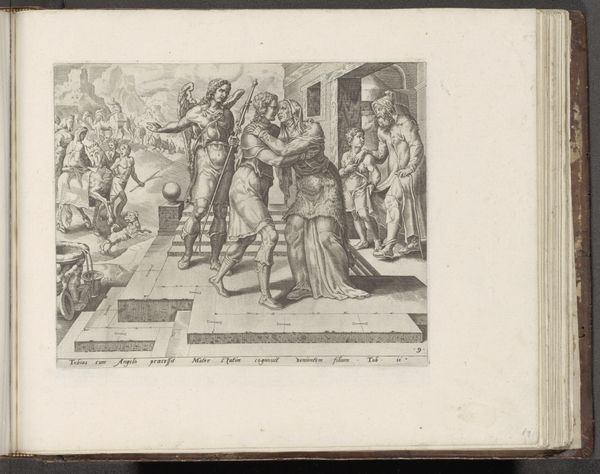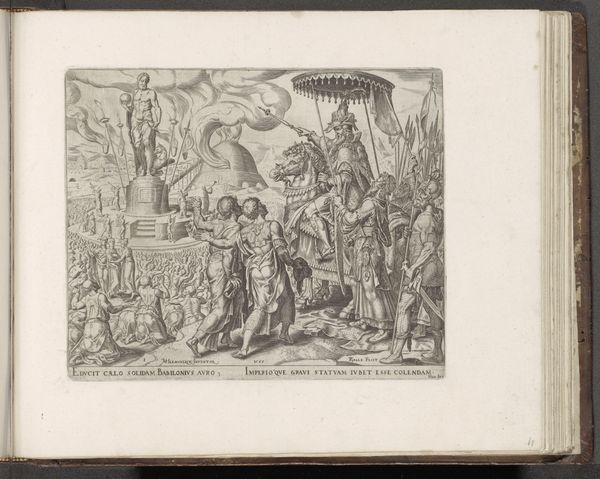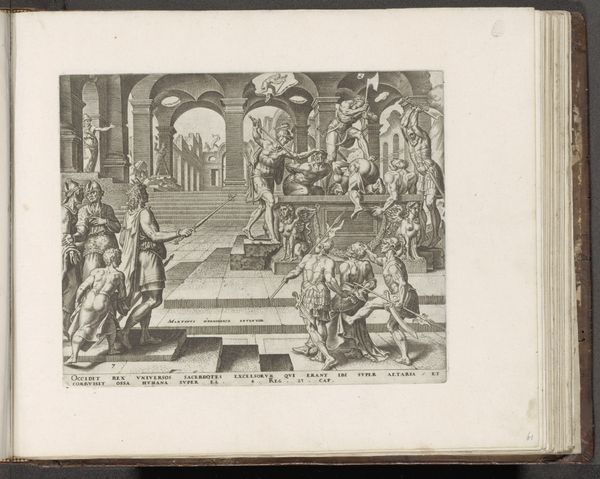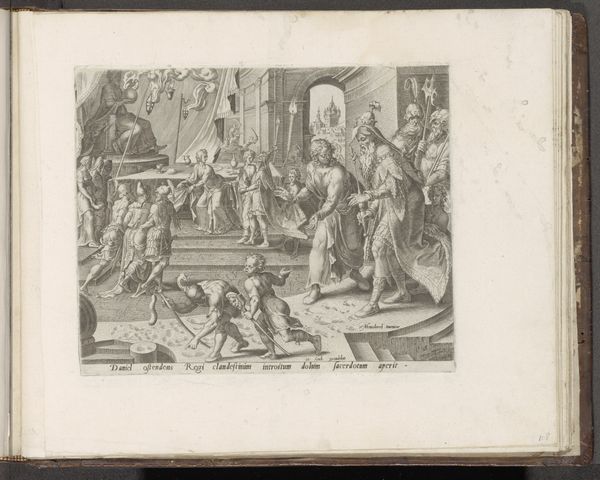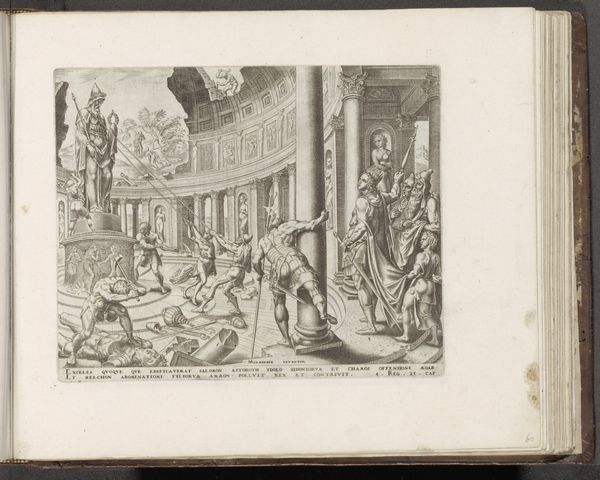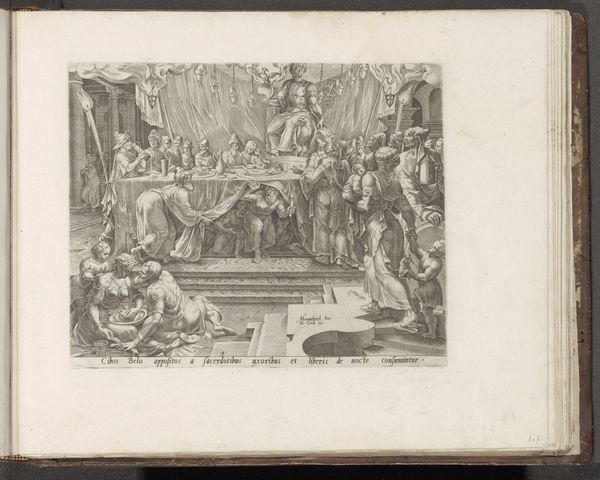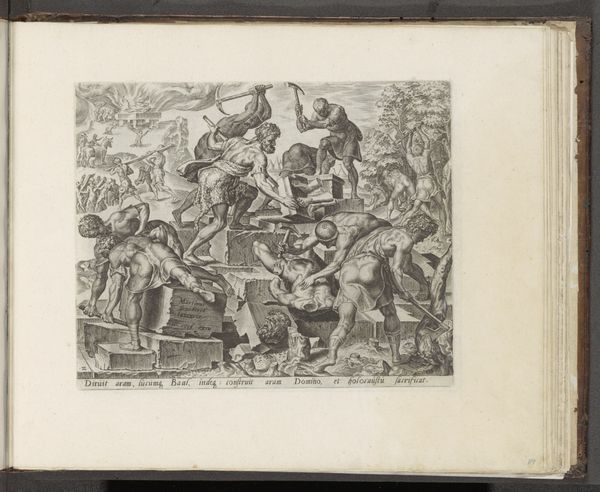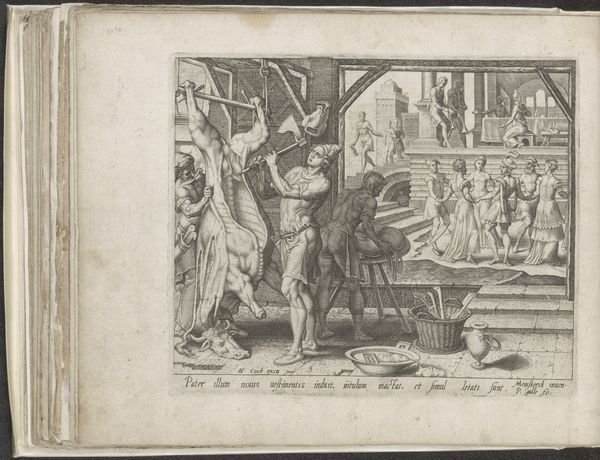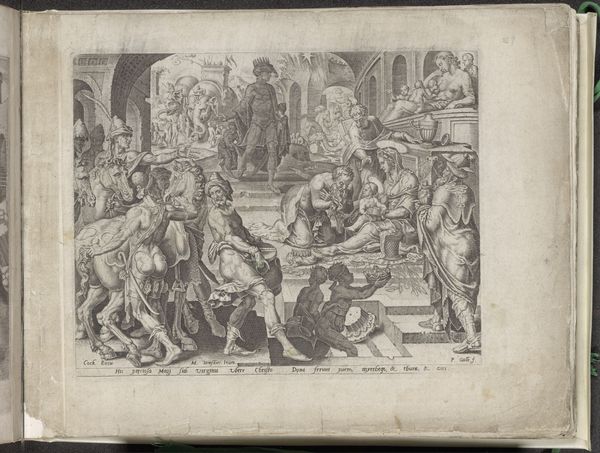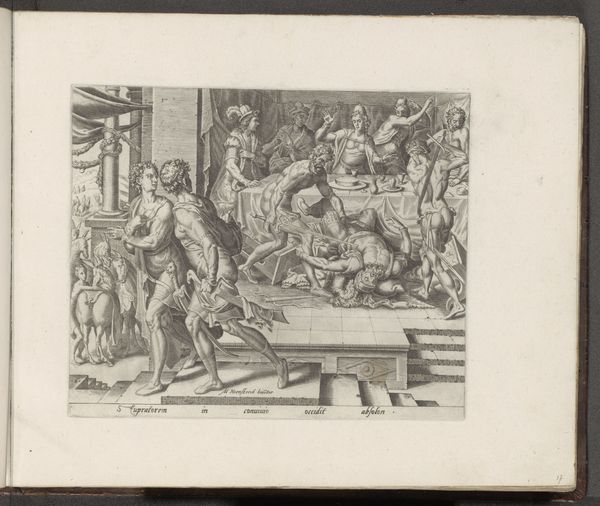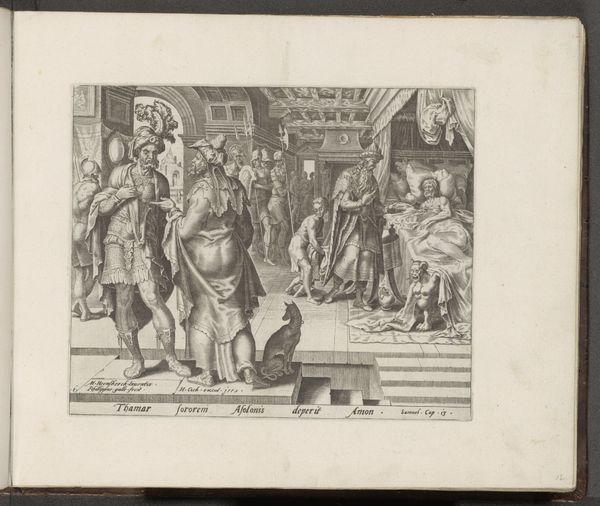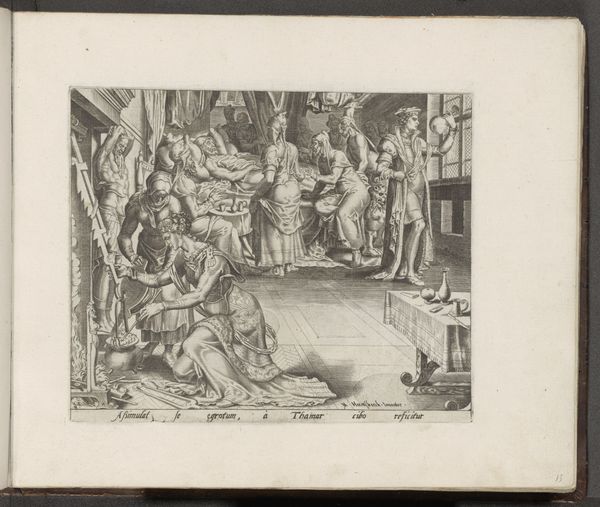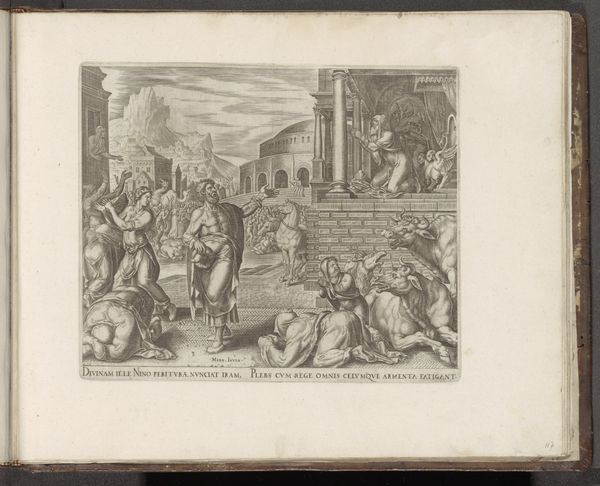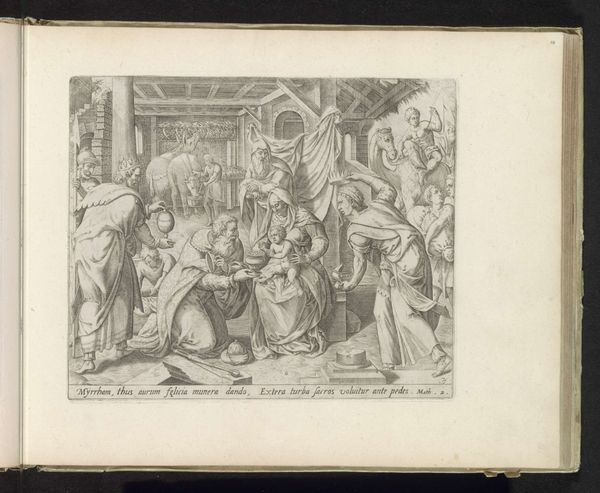
print, engraving
#
narrative-art
# print
#
perspective
#
mannerism
#
figuration
#
history-painting
#
engraving
Dimensions: height 204 mm, width 251 mm
Copyright: Rijks Museum: Open Domain
Editor: So, here we have Philips Galle's "Koning Josia laat de tempel van Baäl verwoesten," an engraving from sometime between 1567 and 1579. It depicts King Josiah destroying the temple of Baal. What strikes me is the sheer energy in this piece; the chaotic action contrasted with Josiah’s central, stoic pose. What do you see when you look at this work? Curator: It’s a visual explosion, isn’t it? The Mannerist style really lends itself to the drama, almost like a staged performance. What I find fascinating is how Galle uses perspective—see how it recedes dramatically into the background? And it’s not just spatial; it's a perspective on religious zeal, a very pointed commentary, don't you think? Is he celebrating the destruction, or perhaps questioning the fervor? What’s your read on that? Editor: I see both. There’s the destruction, presented almost triumphantly. But that distance you mentioned creates this... unease, like we're observers rather than participants. The figures almost seem grotesque in their actions. It's definitely not a simple message. Curator: Grotesque is a great word. And grotesque can reveal deeper truths, right? This print isn’t just documenting history; it's about the potential dangers of iconoclasm, maybe even the cyclical nature of power and belief. Galle gives us an image steeped in its time but hinting at things far beyond. It is also just fascinating to view all the action happening! Look at how Baal's head falls off! I wonder if that speaks to a deeper power being shattered. Editor: Wow, I never thought about the deeper complexities within this picture. Thank you for sharing this thoughtful reflection. I’ll never look at an engraving the same way. Curator: That makes me happy! It is also the power of art, yes?
Comments
No comments
Be the first to comment and join the conversation on the ultimate creative platform.
